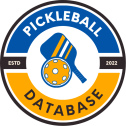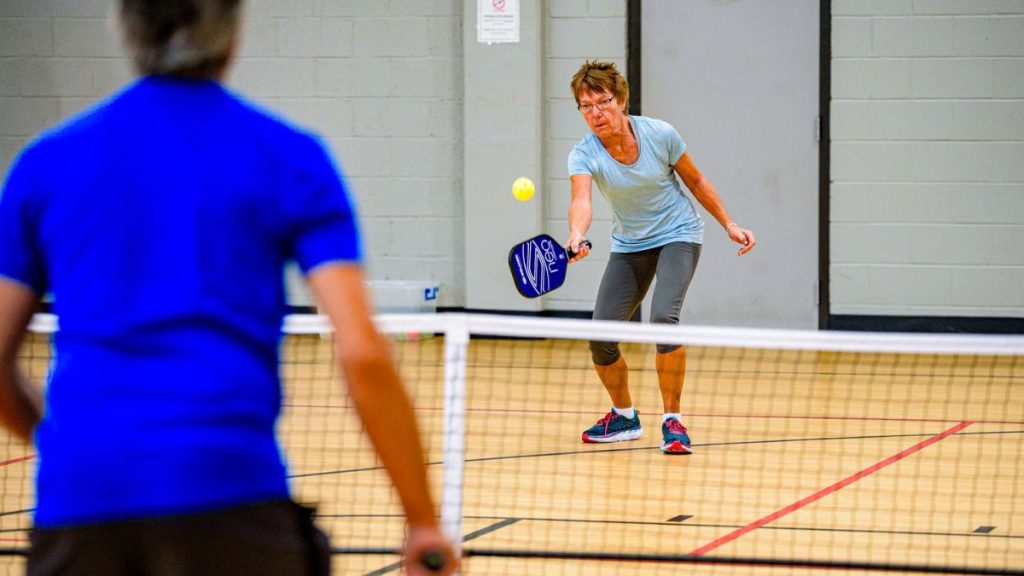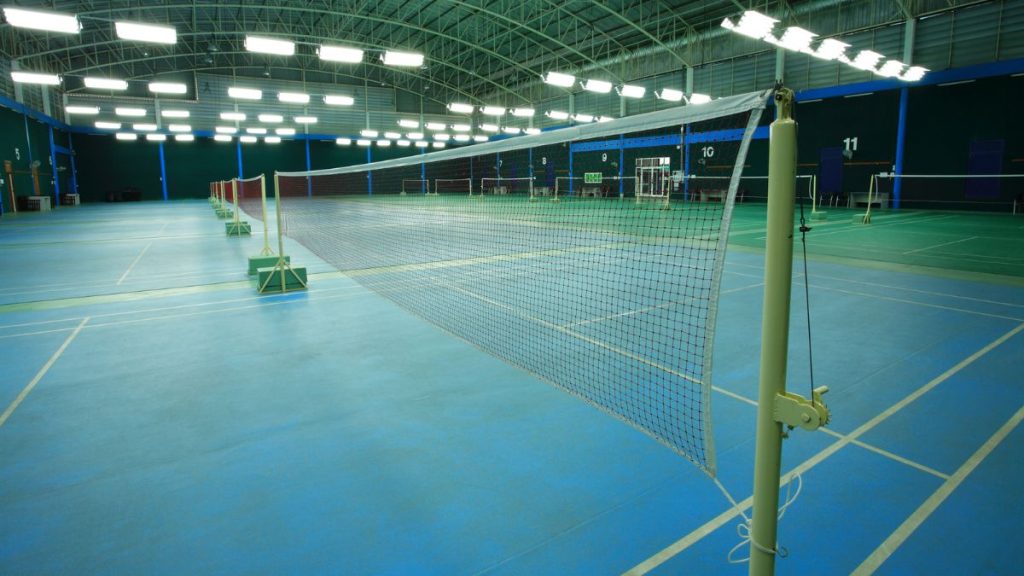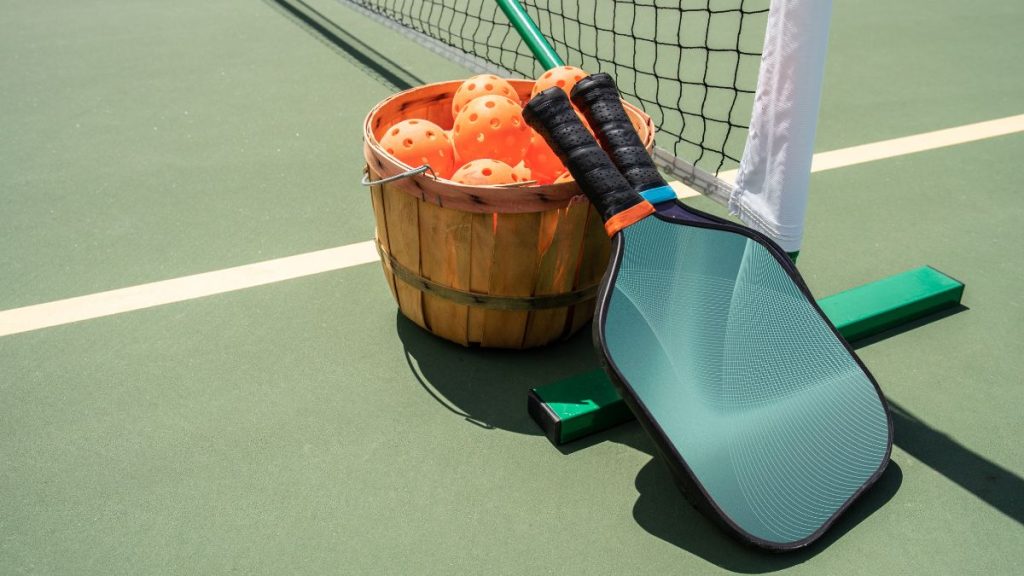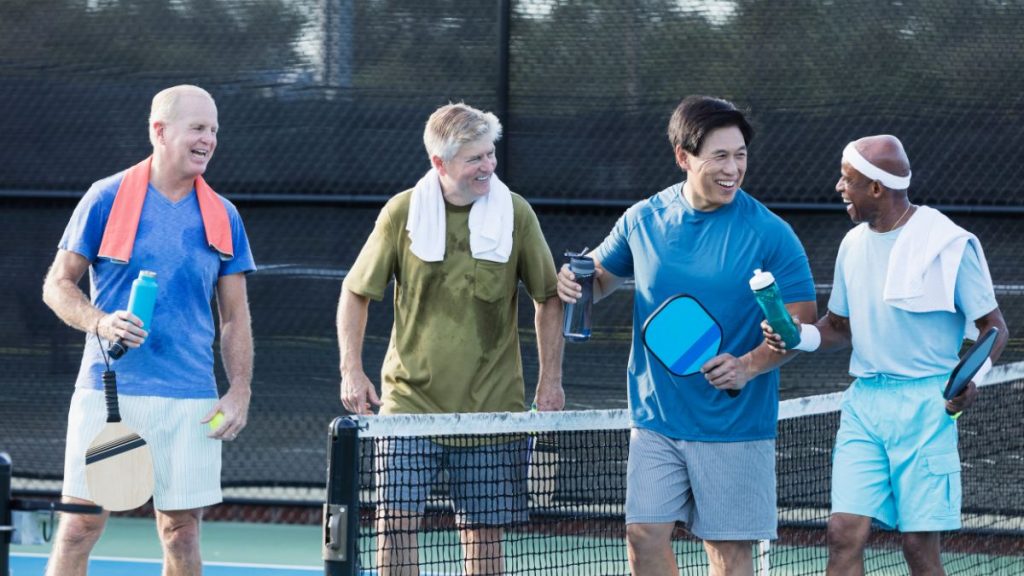We all know that pickleball is a paddle sport that can be played either as a singles game or as a doubles game, but how well do you know the rules?
The rules for singles pickleball are very similar to those for doubles, but the playing strategies between the two have differences to note.
This article will guide you through the rules, how to play singles pickleball and the strategies you can use to win your next game.
What Are the Two Biggest Differences Between Singles and Doubles in Pickleball?
Main differences
Scoring
The main difference when it comes to scoring in singles and doubles pickleball games is the number of scores a player has to take note of. For the singles game, the player will only need to be aware of two scores: his or her own score and the opponent’s score. Meanwhile, a pickleball player must remember an additional score for a doubles game: your serving number.
Service
How the ball is served during the game is one of the biggest differences between singles and doubles in pickleball. This is because we now have four turns of serving with four players.
Connected with the difference in the scoring system for doubles, each player’s serving number determines the score and the specific arrangement of turns during the game.
A player’s serving number in a doubles pickleball game is important because there is a need to announce the serving team’s score, the receiving team’s score, and the player’s number. Players should also remember the following details to avoid mistakes in announcing the numbers before serving:
- For the opposing team, server number 1 is the first player to serve, while his or her partner is automatically server number 2.
- For the team of the first server of the entire game, he or she will be server number 1, while the playing partner is server number 2.
- There will be a possible rotation for the server numbers when a server loses the serve. Only the first server of the entire game won’t be affected.
- Once the first serving team loses all their serves, the opposing team will now become the serving team.
It can be tricky at first, but you’ll get a better grasp of this difference as you play a doubles game.
Other Differences
Benefits
Even in the benefits of playing singles or doubles, the two have some differences.
The benefits of playing singles in pickleball
- Excellent for exercise: Since you’ll have the whole half-side of the court all by yourself, you’ll have more space to walk, run, and just be in action with your paddle and the ball. You’re alone on your side throughout the game, so you’ll be required to consume all the energy you have in order to win the game.
- Good for your health: Playing pickleball can also help you increase your stamina and strengthen your heart.
The benefits of playing doubles in pickleball
- Aside from the physical health benefits, playing pickleball with a partner has mental health benefits. You’ll be able to meet friends and socialize more if you play pickleball in doubles.
- You can also pick your pickleball partner, so if you want to play with your close friend, romantic partner, kids, or other family members, this is a sign for you to go for doubles.
How Do You Play Singles Rules in Pickleball?
The rules for singles pickleball are much like those for doubles, but with a few exceptions.
Service Rules
- Pickleball players should do an underhand serve, where the serve should be hit below the belly button.
- Remember to do a right-hand serve on the first serve for each side. Then for the rest of the game, the kind or position of serve will depend on the current server’s score. For example, if the current server score is 5, the next serve should be done with a left-hand serve, serving to the right-hand side of the receiving player.
- A wrong position in a serve will automatically result in a fault.
- If the server wins the point, he or she will continue to keep the serve until he or she loses a rally. With each win, the server will need to switch courts. If the receiver wins the point, no switching of courts will happen.
- The serve will change and go to the receiver if the original server loses the rally.
No-volley zone
Volleys occur in pickleball when the hit is made before the ball bounces. The no-volley zone is an important part of the pickleball court and a considerably large portion of the court. It measures 14 feet, with 7 feet on each court side.
Given its name, the no-volley zone does not allow volleying within that area, including the no-volley line. Otherwise, the player will commit a fault and lose his or her serve.
While this is the general rule, there are also instances where you’re allowed to step or make contact in the no-volley zone. The no-volley zone is okay to step in during a game as long as the players are not volleying the ball. Groundstrokes, the opposite of volleys, are also legal in the no-volley zone.
The rules in the no-volley zone are strict and crucial because the kitchen is a very important and unique aspect of the game. It makes pickleball stand out among the rest of the racquet sports.
Faults
Faults are called on players who commit violations during a match. Some of the mistakes made in pickleball include the following:
- Stepping on the no-volley zone during a volley
- A fault in serving results in a point for the receiving player or team.
- The ball does not cross the opposite court and is hit into the net.
- Touching the net while in play: A player and any part of his or her clothes and paddle touching the net or the net posts are considered a fault.
- The ball should not bounce twice on one side of the court before being hit to the opposite side of the court.
Line calls
- If the ball served lands on the service court’s baseline, sideline, or centerline, it’s counted as “in.”
- The serve is considered an “out” if the ball lands in the no-volley zone or the kitchen.
- If the ball lands inside the court, including all the court lines, it’s an “in” if the shot is not a serve. It’s an “out” if the ball does not enter the lines on the pickleball court.
- Pickleball players can make line calls during the game, particularly on their side of the court. They can also do this even if an official referee is present in the game.
Where Do You Stand in Singles Pickleball?
There are three crucial areas on the pickleball court, depending on what you’ll need to do in the game.
- When serving: Behind the baseline, position yourself in a diagonal cross-court position to create a good serve.
- When receiving: A player can stand on the baseline when receiving the serve. The approximate best position to receive a serve is a foot or two behind the baseline.
- When volleying, stay behind the no-volley zone or the kitchen line.
These three spots can dictate whether you win or lose a point, so you must know your way around these specific spots. The baseline and the kitchen line are the most common spots to stand during a pickleball game.
What Are the Three Strategies to Use When Playing Singles in Pickleball?
Pickleball playing strategies can also be different from singles to doubles. For singles games, here are some strategies players can use during their matches:
1. Always strive for a powerful, deep serve.
Make an impression of your strength and gameplay on your opponent by making sure your serve is strong and big. This will give you the opportunity to give your opponent a difficult time returning your serve.
2. Recognize where you should be on the court.
Positioning is one of the things you should consider for your gameplay. When a player plays a singles game, he or she is the only one responsible for covering the entire side of the court, which can be challenging and physically exhausting for one person. As a singles player, you should develop a strategy that is smart enough to cover your entire area and, at the same time, one that you can use to defeat your opponent.
3. Keep an eye on open courts.
Take advantage of any open courts on the side of your opponent’s area and aim for the ball to go in areas where you believe he or she will have difficulty returning the ball. Remember that your goal for the game is to win points for yourself. Open courts can help you with that.
Final Thoughts
Playing singles in pickleball should not be tricky, even if you have to do all the work and effort alone. If you’re thinking of switching to becoming a singles pickleball player or are still exploring the sport, we hope this guide will help you with what you need to know.
